From Gothic Victorian fortresses to jaw-dropping coastal citadels, South Wales is home to some of the most impressive castles in Britain. Here are ten of the best.
Caerphilly
Britain’s second-largest castle after Windsor – and the third largest in Europe – Caerphilly Castle is an astonishing sight, not only because of its bulk, but also because of its concentric design, a design that preceded Edward I’s strongholds in North Wales by several years and which was also the first of its kind in Britain.
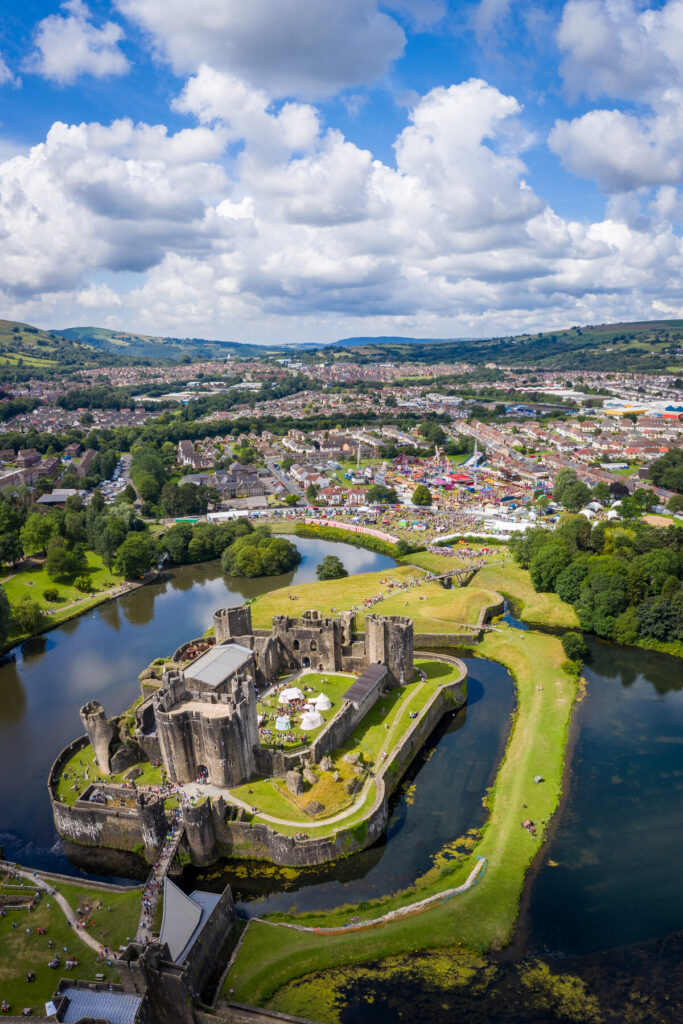
The middle ward is fronted by the outer east gatehouse, an extraordinary proposition even by this castle’s impressive standards, but even that pales when compared with the inner east gatehouse, which invites access to the inner ward. Never breached, the inner ward is defined by its four great towers, one of which, the southeast tower, is the castle’s most iconic structure on account of its disconcerting lean.
Cardiff
Tucked into the southeastern corner of Bute Park and hemmed in by two of the city’s busiest roads, the spacious grounds of Cardiff Castle make for some welcome relief from all the outside noise. A Gothic Victorian fantasy of the most ostentatious kind.
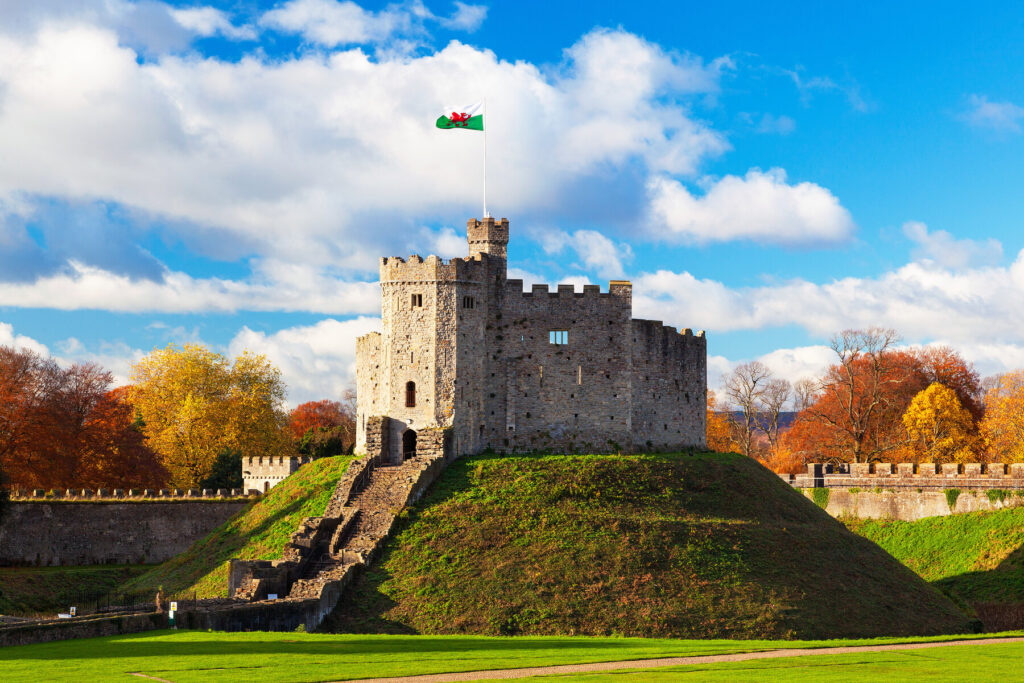
Inside, it’s possible to view a selection of rooms on a self-guided tour but you’ll get to see more areas if you take a guided tour, for which there is a small additional fee. The most impressive rooms are the church-like Banqueting Hall and the well-stocked library, complete with original bookcases and tables.
Carreg Cennen
A mighty, heroic fortress grafted on to a vertiginous limestone outcrop on the Carmarthenshire/Brecon Beacons border, few superlatives do its location justice. It last saw action in 1462 when it was partially destroyed by the Earl of Pembroke and has pretty much remained unaltered since. Its high, jagged, and occasionally gappy walls are still largely intact, though the structure is secondary to the constantly superlative panoramas.
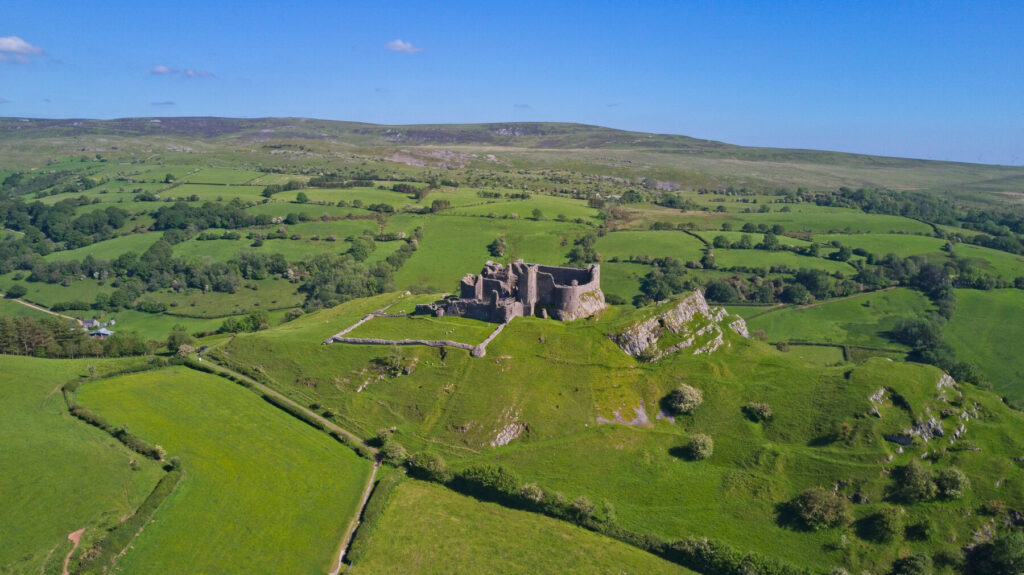
Deep in the guts of the castle is a natural cave, which can be reached via a narrow, damp passage, though lots of head ducking is required. It’s great fun – so long as you’re not claustrophobic – and at its furthest extent (around 160ft) it’s possible to detect some graffiti etched into the stone boulders bearing the date 1887.
Chepstow
Perched high above the cliffs, its sides dropping almost sheer into the muddy waters of the River Wye, Chepstow Castle was described by the late, great Jan Morris as ‘like a huge fist of rock at the very gate of Wales’ – and there’s no question it’s a mightily impressive sight.
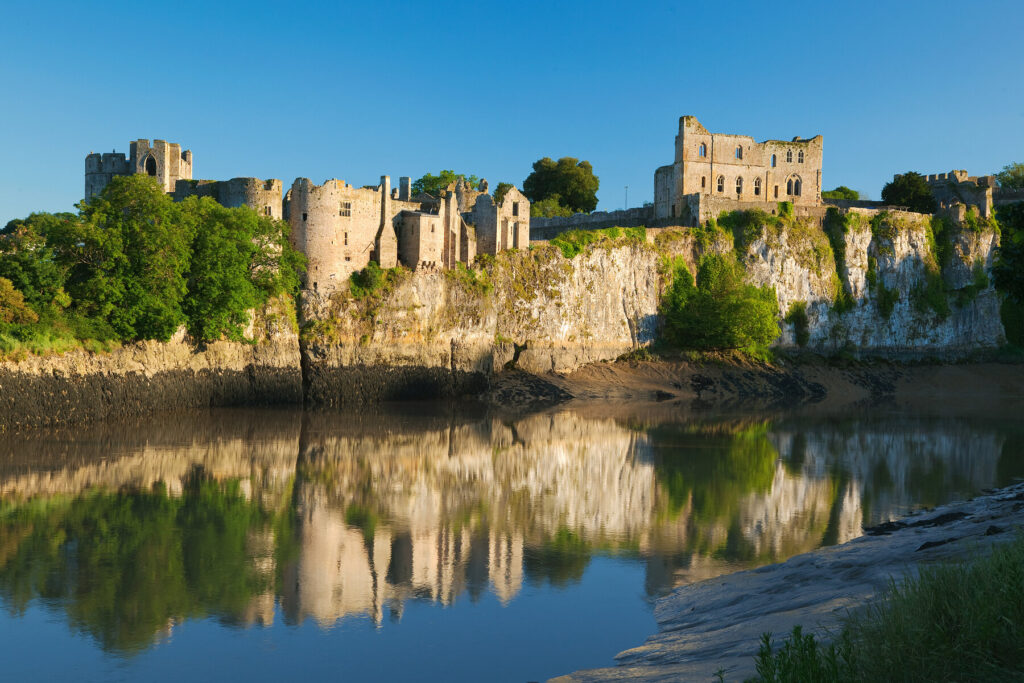
It also stakes claim to being the oldest surviving stone-built castle in Wales – not a bad boast considering that there are over 100 castles still standing in the country. The Domesday Book records that the first stones were laid here in 1067 by William Fitz Osbern.
Dinefwr
Perched atop a prominent crag above the Tywi River, this is where Rhys ap Gruffydd developed his seat of power in the late 12th century, though records suggest that there was a fortification here some 200 years prior to his arrival. It was a seat of some significance too, for the Rhys dynasty had established Deheuberth as the pre-eminent Welsh Kingdom at that time.
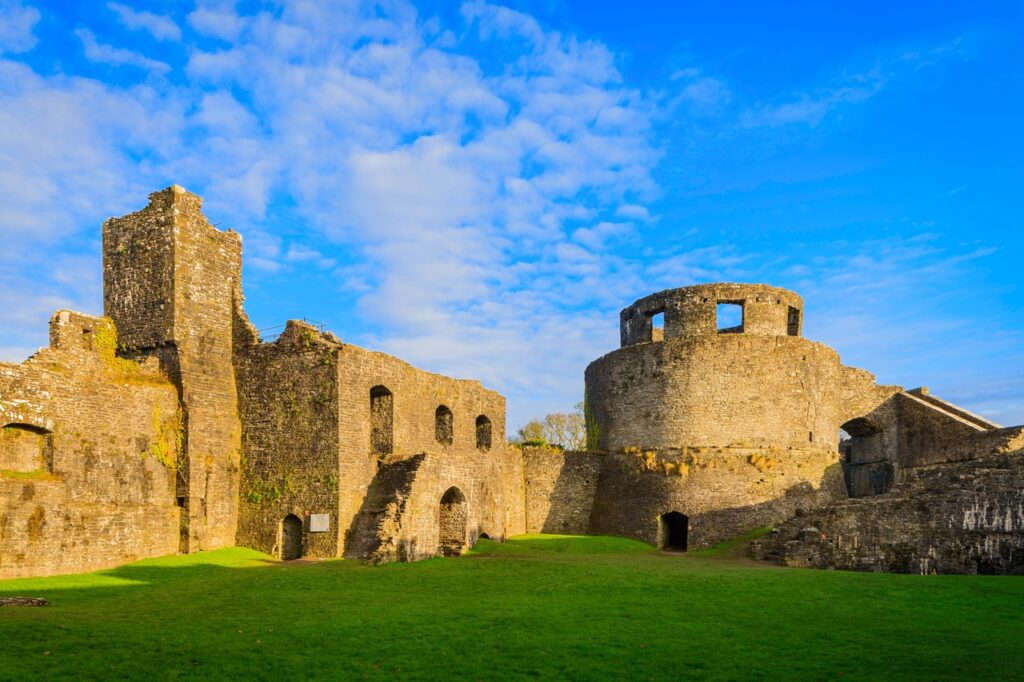
There’s little of architectural merit here, but the views are scintillating. Dinefwr Castle is best combined with a visit to Newton House. Casting a glance at the perkily turreted corner towers of the building, you could almost be forgiven for thinking that you were in the Loire Valley.
Kidwelly
‘There is an air of solemn majesty in its appearance that bespeaks a noble origin’, so recalled the Anglo-Irish writer Edward Donovan. Spread across a large grassy knoll above the Gwendraeth Fach, Kidwelly Castle is indeed a magnificent fortress. It’s also just as a castle should be: endless battlements, cannon ports, hidden staircases and other nooks and crannies that make it thoroughly explorable and inspiring.
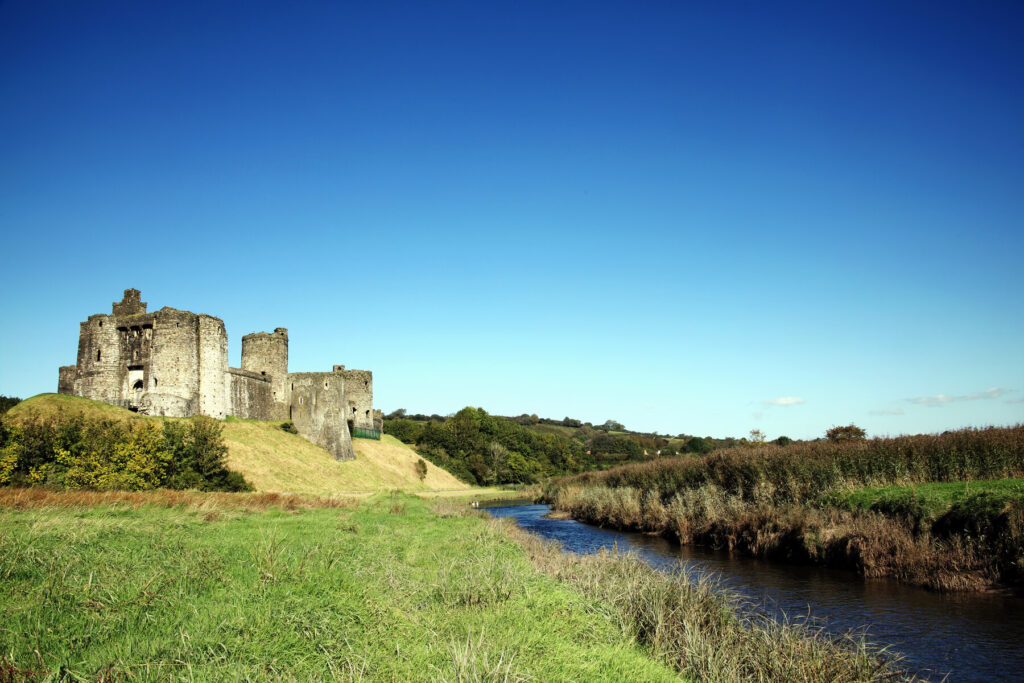
Among the earliest structures were the four portentous corner towers. Each tower is possessed of its own, uniquely distinguishing feature: the southwest tower, for example, is the only one with its floors intact and a stone-vaulted ceiling; the northwest tower retains an unusual kidney-shaped structure; while the northeast tower looks distinctly askew.
Laugharne
Teetering on a low cliff above Carmarthen Bay, the ivied ruins of Laugharne Castle make for an imposing sight, especially when viewed from the shoreline below. The oldest upstanding remains of the castle date back to the 13th century, though there was almost certainly an earthernwork structure here prior to this.
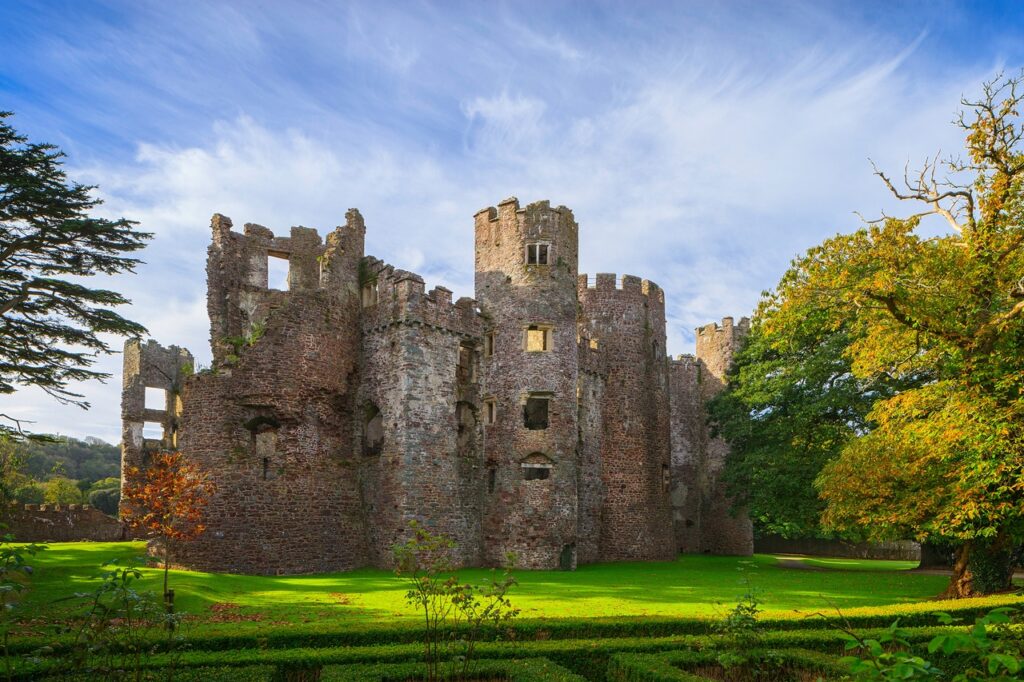
Having crossed the bridge through the inner gatehouse, take a look about two-thirds of the way up on the right-hand side and you’ll see an exquisitely dressed capital. The inner ward is a motley assemblage of half-bitten towers with hollowed-out windows, the most complete sections of which are the two north towers, just yards apart from one another.
Llansteffan
To the list of South Wales’s formidable coastal fortresses you can add Llansteffan, marooned between two wide estuaries in the village, and on the peninsula, of the same name. As was the case with so many fortresses, the original timber building (itself preceded by an Iron-Age promontory fort) was replaced by a much stronger Anglo-Norman fortress, designed by the incumbent de Camille family.
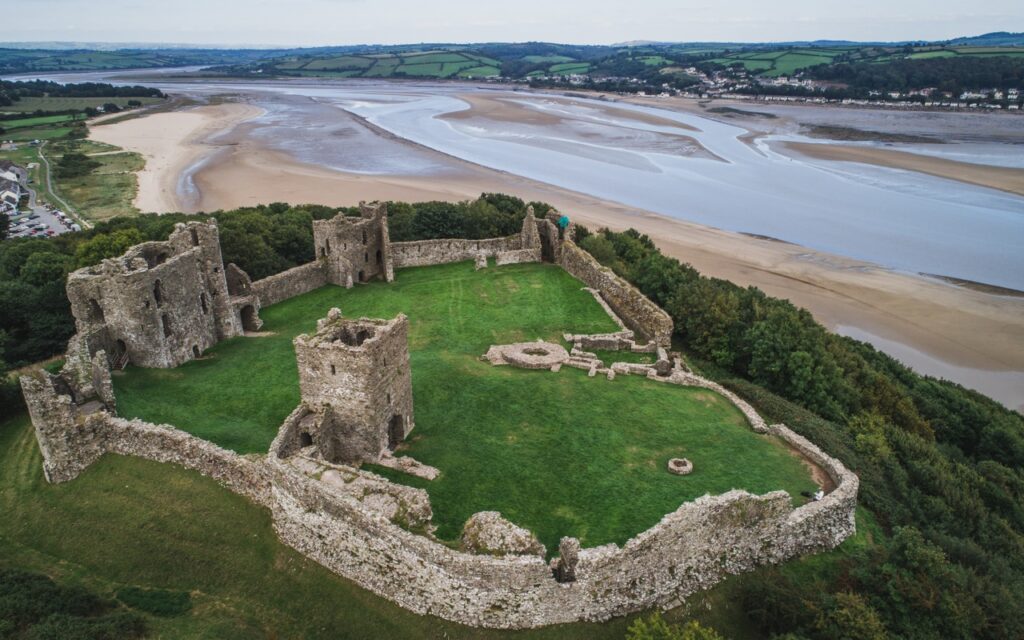
A tug-of-war battle for power then ensued between the Welsh and English before the castle was conferred on Jasper Tudor. In 2016, the castle entered private ownership for the first time, when Marian Evans bought the property; one of the first things she did was to commission a pair of wrought-iron gates for the original medieval gatehouse.
Picton
Retaining an air of baronial magnificence, Picton Castle was originally raised in 1280 by the one-time Justiciary of Ireland, John Wogan, before it was handed over to the Picton Castle Trust in 1987.
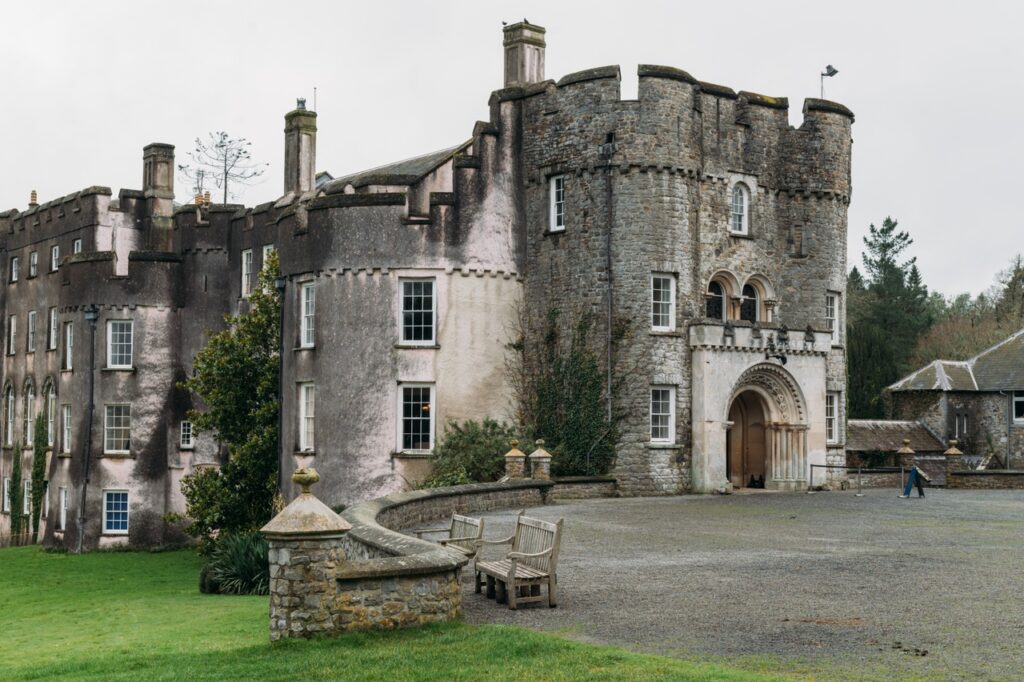
Visits to the castle are by guided tour only, which can’t be pre-booked so you’ll be given an allotted time when you purchase your ticket. The two most impressive rooms are the circular library, which conceals numerous clever contraptions including hidden bookcases and curtains that open outwards, and the Georgian- style Great Hall, at one end of which is a Minstrel’s Gallery complete with organ.
Raglan
Visible for miles around, Raglan Castle does more to give the impression of a palace than it does of a 15th-century fortification, which should come as no surprise because it was in fact originally built almost entirely as a statement of wealth and influence, more concerned with securing fabulous views – which it has in abundance – than defending the local territory.
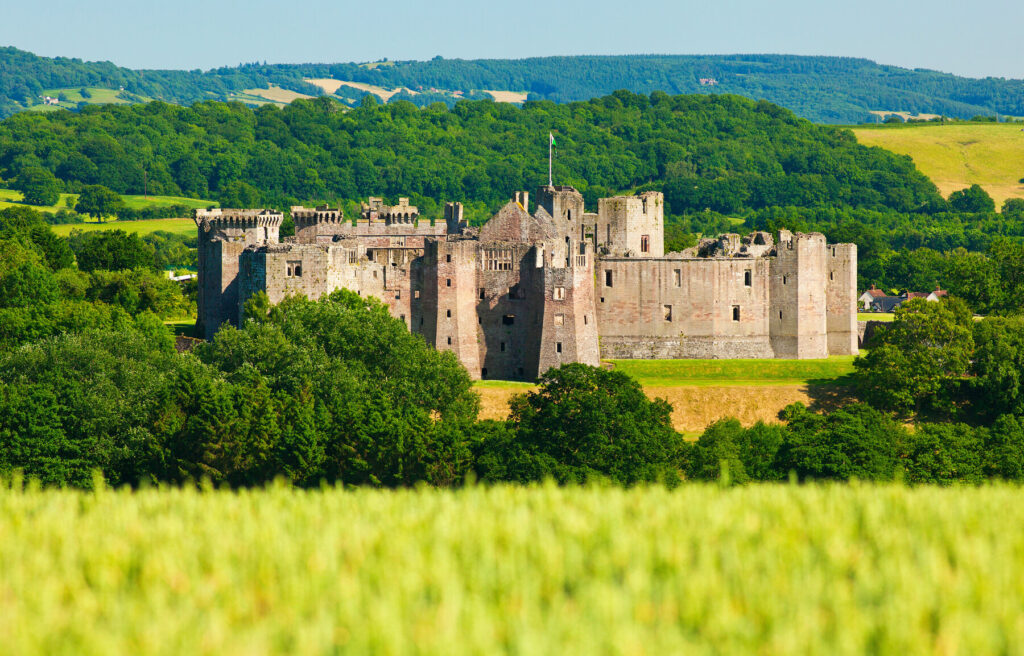
Whatever its raison d’être, kids will love having the run of the place, with its big towers and never-ending spiral staircases, gunloops and slits, and damp, dingy caverns, all in the name of endless exploration. Don’t miss the impressive hexagonal Kitchen Tower that retains its two impressive fireplaces, and the basement – known as the Wet Larder – where residents would have kept all the meat, cheeses and other perishables.
More information
For more information, see Norm Longley’s guide:
